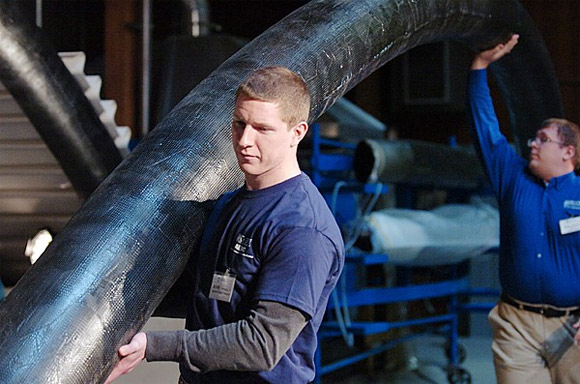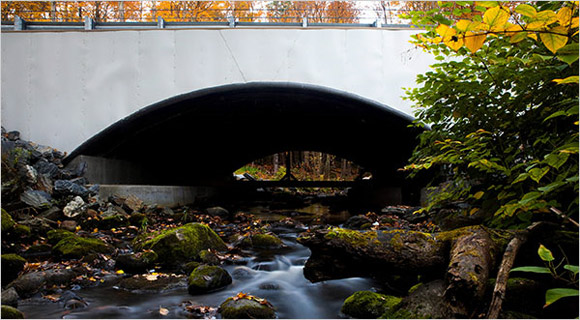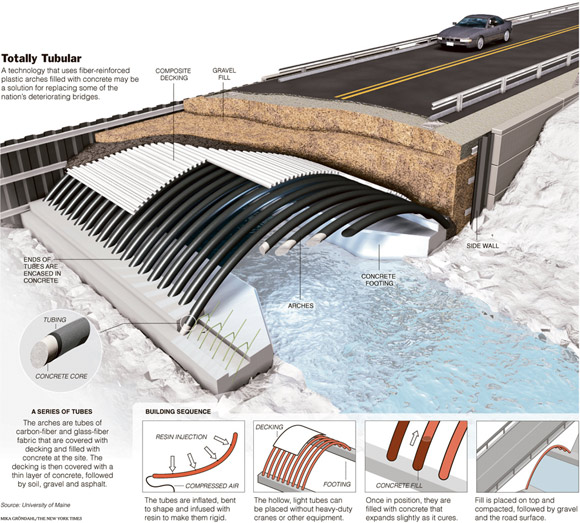Bridge of the future, bridge to the future, whichever you choose to think of it, it is actually called the Neal Bridge. It is located in Pittsfield, Maine and it is the nation’s first infrastructure like it. From the looks of it, this bridge may appear to look like any other, but it’s what’s underneath that counts. What’s underneath you ask? Arches made from carbon and glass-fiber fabric. Carbon fiber composite tubes, 23 to be exact, were inflated, curved into arches and infused with resin at the construction site. Overnight, the tubes stiffen and are then installed and later filled with concrete. Once the tubes harden, they are then two times harder than steel and corrosion resistant.
The arches are then covered with a fiber-reinforced decking and buried under several feet of soil. It turns out that that not only does the bridge look identical to your average bridge; it also costs the same, if not less. The tubes also protect the concrete from water and other natural elements therefore prolonging its life expectancy. Maintenance costs are expected to be lower along with reduced environmental impacts. This construction method is also referred to as “bridge-in-a-backpack†because of its light weight and portability. The contents of a bridge can be transported with the use of one truck.

This technology milestone was accomplished after years of research conducted by The University of Maine-based Advanced Engineered Wood Composites Center in Orono. AEWC director Habib Dagher was quoted saying “it has the potential to change everything in terms of bridge construction. It can change the way bridges are built in the future.†With so many road bridges in need of repair or replacement, this “bridge-in-a-backpack†technology may really catch on and could result in an advance for fiber-reinforced plastics being used for roadways.

Fiber-reinforced plastics, a.k.a., F.R.P, have yet to catch on because of the little experience engineers and contractors have with the materials. Not to mention, their costly price. Using F.R.P. in the construction industry can sometimes result in being twice as expensive as ordinary materials. Michael Drabenstott, the communications director for AltusGroup, guest blogged an article “Carbon Fiber Growing As Reinforcing Material In Precast Concrete†pointing out the pro’s of using carbon fiber in precast cement, mentioning its environmental friendliness and long life span.
There are now two bridges in Maine that have been rebuilt using the “bridge-in-a-backpack†technology, the Neal Bridge and the McGee Bridge in North Anson, ME. Over the next two years, an additional six bridges will be constructed using the carbon fiber tubing. Would you like to see more bridges being reconstructed or repaired using carbon fiber in your area? Do you trust its strength and durability on roadways?
[Sources: NY Times, Bangor Daily News, AEWC]
